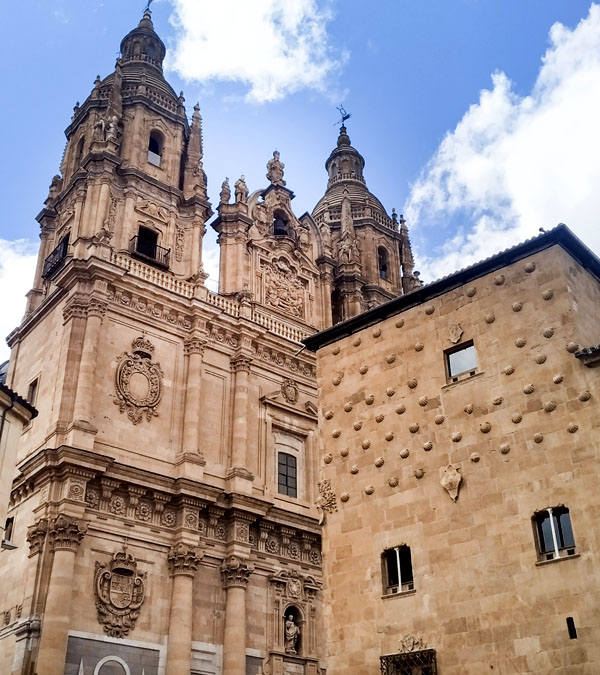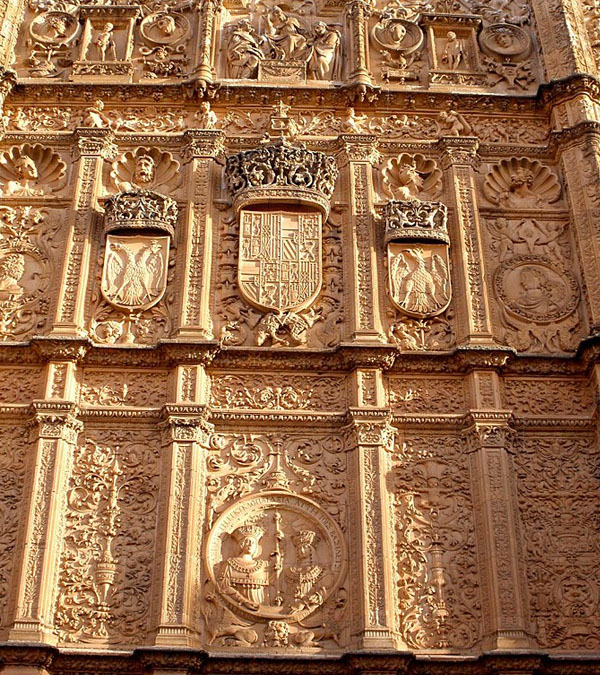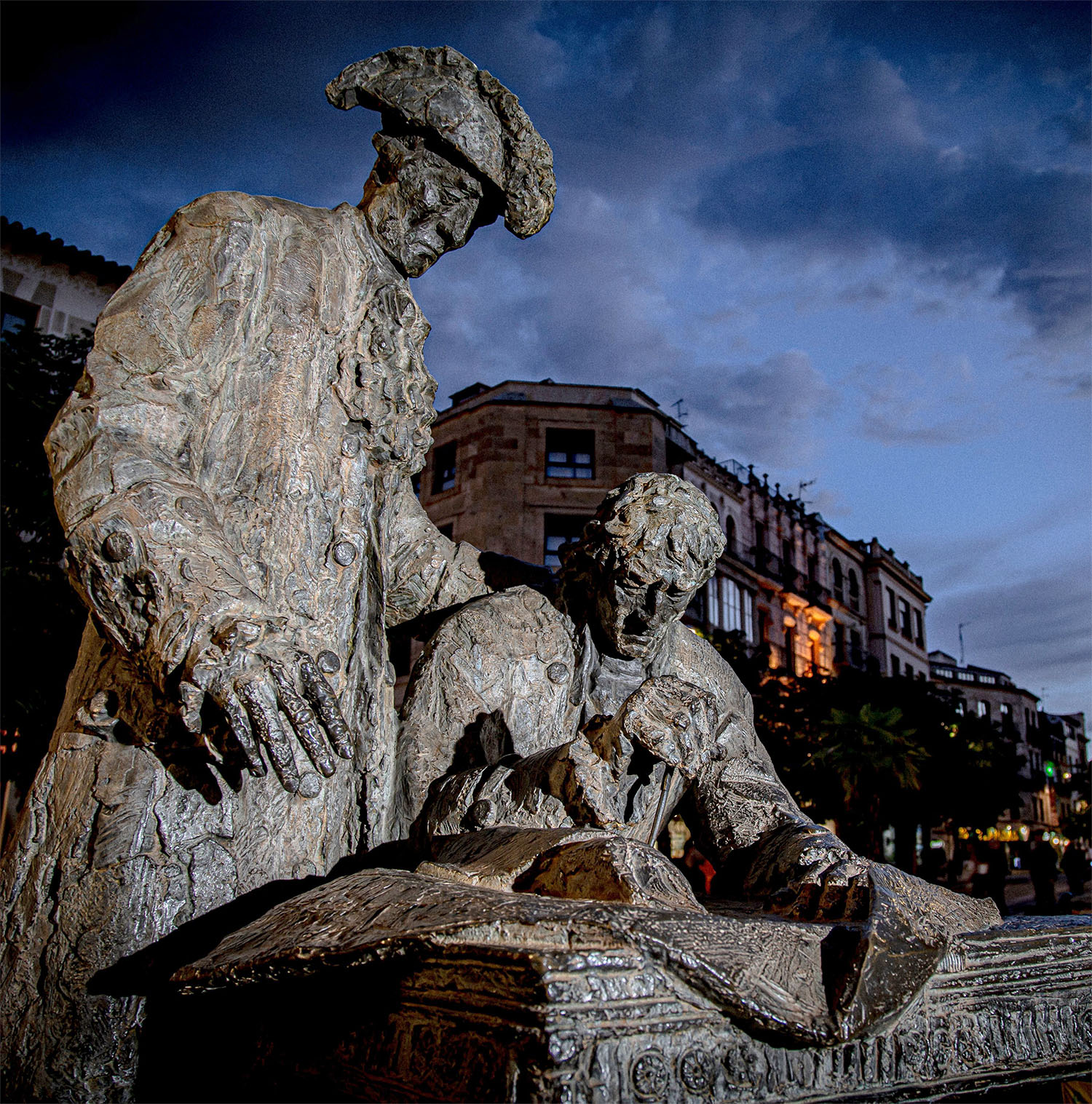SALAMANCA AND THE BAROQUE_
World Heritage City and Birthplace of Churrigueresque Baroque
Salamanca, recognized as a World Heritage City by UNESCO on December 9, 1988, is one of the most beautiful cities in the world, thanks to its exceptional architectural and cultural heritage, in which the Baroque style plays a fundamental role. This recognition is largely due to the influence of the Churriguera family of architects, whose Baroque legacy left an indelible mark on the city.
The city is part of a select group of UNESCO World Heritage Cities due to three exceptional universal values. First, its Plaza Mayor is a masterpiece of civil Baroque art and one of the most important urban ensembles of the 18th century in Europe. The construction of the square began in 1729 under the direction of architect Alberto de Churriguera, continued by his nephew Manuel de Churriguera, and completed by Andrés García de Quiñones. This impressive public space combines the elegance and grandeur characteristic of the Baroque style, becoming one of the nerve centers of urban life in Salamanca. It is not only a symbol of the city but also a living testimony to the influence of the Baroque on its architectural development.
Second, its Old City is one of the essential centers of Baroque art, with architectural cohesion and integrity especially valued by UNESCO. Monuments such as the New Cathedral, the Clerecía, the College of Calatrava, the College of San Ambrosio, the church of San Sebastián, and San Esteban stand out for their decorative richness and historical importance, constituting a fundamental nucleus of the Churrigueresque style in Salamanca.
Third, its University, founded in 1218, is one of the oldest and most famous in Europe. The University of Salamanca remains in use and preserves an admirable architectural heritage that illustrates the various functions of the university institution in the Christian world. This ensemble includes the Hospital del Estudio, the Major and Minor Schools, and numerous colleges founded between the 15th and 18th centuries, forming an impressive educational and architectural legacy in the heart of the historic city.



THE LEGACY OF
THE CHURRIGUERA FAMILY_
The Churriguera family played a crucial role in spreading the Baroque style in Salamanca. Three prominent members of this family stood out as architects and sculptors, significantly contributing to the urban landscape of the city. These artists were fundamental in creating numerous works that are now icons of Salamancan Baroque.
José Benito de Churriguera (1665-1725) was the pioneer of the family, known for his ability to combine architectural and decorative elements in an innovative and spectacular way. His style, known as Churrigueresque, is characterized by abundant ornamentation and the use of curved and undulating forms. Among his most notable works are the altarpiece of the church of the convent of San Esteban and the college of San Agustín, consolidating his reputation as a master of the Baroque.
Alberto de Churriguera (1676-1750), the younger brother, continued and expanded José Benito’s work. In addition to his participation in the creation of the Plaza Mayor, Alberto was responsible for the construction of the College of Calatrava. His contribution to the architectural development of Salamanca was fundamental in consolidating the Baroque style as one of the hallmarks of the city. The Baroque facade and decorative details of the College of Calatrava are a testament to his mastery.
Joaquín de Churriguera (1674-1724) also left an indelible mark on Salamanca. Among his most notable works are the main altar of the church of San Esteban and the great dome of the New Cathedral of Salamanca, although the latter was partially destroyed by the Lisbon earthquake of 1755. Joaquín also intervened in the Hospedería of the Colegio Mayor de San Bartolomé, the College of Calatrava, and the enclosure of the Choir of the New Cathedral of Salamanca, works that his brother Alberto would continue.

TRIBUTE TO ALBERTO
DE CHURRIGUERA_
In 2005, the city of Salamanca paid tribute to Alberto de Churriguera with a bronze sculpture, created by Fernando Mayoral, on the occasion of the 250th anniversary of the Plaza Mayor. This sculpture, located in the Plaza del Poeta Iglesias, shows Alberto de Churriguera next to the Count of Francos, José del Castillo y Larrazábal, promoter of the Plaza Mayor work. The work captures Alberto working on the plans with a compass, reflecting his importance and legacy in Salamancan architecture.

PLAN DE SOSTENIBILIDAD TURÍSTICA DE SALAMANCA





